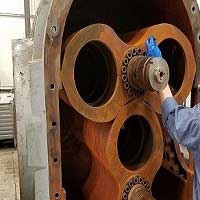What is the principle of vacuum pump?

In years past, industrial vacuum pumps were known for their loud operation, substantial amount of oil carryover, and large energy costs. No longer! Significant developments in vacuum pump technology have resulted in advances in the energy usage, reliability, noise levels, and overall performance of these machines. Let’s learn more about the current working principles of the four main categories of industrial vacuum pumps.
Rotary Vane Vacuum Pump
This tried and true technology has been the focus of many technology updates over the years. In this vacuum pump, vanes are mounted to a rotor rotating inside of a circular casing and move outwards via centrifugal force. Compared to earlier versions, the current rotary vane vacuum pumps are quieter, more compact, have a lower energy demand, and also operate at lower temperatures. They even incorporate internal injection channels! These are well suited for usage in paper and printing applications, woodworking, and material handling.
Screw Vacuum Pump
In the screw vacuum pump, two screw rotors rotate in opposite directions. Compared to the typical oil-sealed or dry vane vacuum pump, this technology is hallmarked by lower heat and noise levels, but higher performance levels. If you choose to add in electronic process controllers or VSD (variable speed drive), they can be extremely cost-effective choices. Industries that use this pump include glass, canning, plastics, and food packaging.
Liquid Ring Vacuum Pump
As the impeller of a liquid ring vacuum pump rotates, water (which is the typical seal liquid used in this type of vacuum pump, though other liquids can be employed) is thrown about to form a literal “liquid ring.” This, in turn, seals the impeller and creates separate enclosed gas chambers between each blade. Liquid ring pumps are optimal for handling extreme vapor loads, or in applications with high tolerance for liquid carryover. Examples include usage in breweries, food production, and in the dairy industry.
Dry Claw Vacuum Pump
Dry claw vacuum pumps are advantageous in that there is no threat of contamination to the application, as there isn’t any lubrication in the main pumping chamber! The two claw-shaped rotors do not touch during operation, which eliminates wear – and thus decreasing service needs & overall ownership cost. They are also one of the most quiet pumps, and can be combined into one housing with multiple units. Applications such as pneumatic conveying, packaging lines, drying processes, and central vacuum supply systems commonly use the dry claw vacuum pump.
[/av_textblock]
Leave a Comment